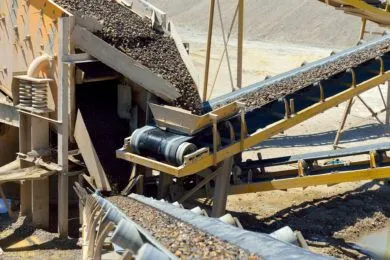Efficient mineral processing is crucial for mining companies aiming to stay competitive while meeting environmental standards. From extracting valuable minerals to minimizing waste, the industry’s reliance on optimized processes has never been more significant. However, traditional methods often fall short of addressing today’s challenges, such as rising production costs and stricter environmental regulations.
Thankfully, innovative techniques and advanced technologies are reshaping how materials are processed, delivering faster, more cost-effective, and sustainable results. This article dives into some of the groundbreaking innovations in mineral processing that are simplifying operations, boosting efficiency, and paving the way for a greener mining industry.
Understanding Mineral Processing
Mineral processing, also known as ore dressing, is the procedure of separating valuable minerals from the raw ore in which they are embedded. This process involves stages such as crushing, grinding, classification, and separation. While conventional methods like flotation and gravity separation have been reliable, they have limitations in efficiency, cost, and environmental impact. Enter innovative solutions to bridge these gaps.
Game-Changing Techniques Transforming Mineral Processing
Magnetic Separation for Efficient Sorting
Magnetic separation is one of the emerging methods making waves in the industry. This technique utilizes magnets to separate valuable magnetic materials, such as iron, from non-magnetic substances in the ore. Magnetic separators are particularly effective in processing iron ore and other ferrous minerals.
What makes this innovation stand out? It’s highly efficient at increasing purity levels while being energy efficient, which translates to reduced operational costs. Additionally, the growing demand for technologies that reduce waste has led to the advancement of dry magnetic separators, which minimize water usage.
Benefits of Magnetic Separation
- Improved purity of final products
- Lower energy consumption compared to traditional methods
- Reduced environmental impact through minimized water use
Whether you’re dealing with weakly magnetic minerals or larger, highly magnetic particles, magnetic separators deliver promising solutions to streamline mineral processing.
Sensor-Based Ore Sorting
Sensor-based ore sorting represents another technological leap forward. Using advanced detection systems such as X-rays, near-infrared sensors, and lasers, this innovation identifies valuable minerals and sorts ore into high-quality and low-quality batches.
Why does this matter?
By streamlining the sorting process right at the start, operators reduce the burden on downstream systems like grinding and crushing, cutting energy consumption and operating costs.
Fun Fact
A recent study noted that sensor-based sorting enabled some mining operations to achieve up to a 30% reduction in processing costs!
High-Pressure Grinding Rolls (HPGR)
High-pressure grinding rolls, or HPGR, are mechanized cylinders that compress and grind ore into finer particles. Unlike traditional grinding methods, HPGR generates less heat, uses less energy, and significantly reduces wear and tear on equipment.
Key advantages:
- Energy efficiency: Lower electricity consumption per ton of material processed.
- Eco-friendly: Reduced greenhouse gas emissions associated with energy use.
- Longevity: Longer equipment lifespan compared to traditional methods.
These features make HPGR an excellent solution for the industry’s growing focus on greener operations.
Other Emerging Innovations
Beyond magnetic separation and HPGR, the mineral processing field is also adopting eco-friendly reagents, AI-driven process monitoring, and advanced centrifuge systems. These developments not only boost performance but also contribute to cleaner operations by reducing hazardous by-products.
Industry-Wide Impact of Innovative Processing Techniques
Enhanced Efficiency
New technologies allow mining companies to process ores faster and with greater yield. This translates directly into higher profitability, enabling organizations to scale production without drastically increasing costs.
Reduced Environmental Footprint
Sustainability is no longer a luxury; it’s a necessity. By using innovative techniques like dry magnetic separators and water-saving mechanisms, companies can lower their ecological impact and meet increasing regulatory demands.
Operational Savings
The adoption of energy-efficient systems significantly reduces expenses related to utilities, equipment maintenance, and raw material loss. For companies operating in tight markets, these savings could mean the difference between success and closure.
Competitive Edge
Mining companies that adopt innovative technologies early not only save costs but also position themselves as leaders in their industry. This can be a crucial differentiator when securing partnerships or exploring new ventures.
Moving Toward a Sustainable Future
The rise of innovative mineral processing techniques signals a turning point for the mining sector. Techniques like magnetic separation, sensor-based sorting, and high-pressure grinding rolls are streamlining operations while helping mining companies address environmental and financial challenges.
If you’re in the mining industry, the message is clear: staying ahead of the curve means investing in innovative solutions. The road ahead requires adaptability, but the payoff is worth it. Not only will you reduce costs and enhance efficiency, but you’ll also contribute to a more sustainable mining ecosystem.


